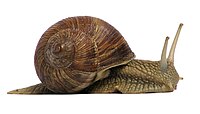
Photo from wikipedia
This article analyzes the indices of oxidative stress activity in freshwater bivalve Dreissena polymorpha (Pallas) from areas of the Rybinsk Reservoir with different levels of anthropogenic load. The following indices… Click to show full abstract
This article analyzes the indices of oxidative stress activity in freshwater bivalve Dreissena polymorpha (Pallas) from areas of the Rybinsk Reservoir with different levels of anthropogenic load. The following indices are studied: activity of catalase (CAT), glutathione reductase (GST), glutathione S-transferase (GST) and content of reduced glutathione (GSH), malondialdehyde (MDA), and carbonyl groups of oxidized proteins (CG). During the study period (July), the indices of oxidative stress of zebra mussel D. Polymorpha did not differ between sexes. Mussels that were collected in the most polluted part of the reservoir, the Sheksna stretch near the industrial complex of the city of Cherepovets, had a higher activity of catalase, glutathione S-transferase, and glutathione reductase and a higher content of malondialdehyde than zebra mussels taken from the relatively clean Volga stretch.
Journal Title: Inland Water Biology
Year Published: 2018
Link to full text (if available)
Share on Social Media: Sign Up to like & get
recommendations!